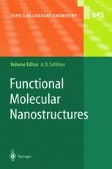Search
Search Results
-
Interaction of Palladium Nano-Crystals with Hydrogen During PECVD Growth of Carbon Nanotubes
Using plasma-enhanced chemical vapor deposition (PECVD) with Acetylene and Ammoniac on Pd-specimens Carbon nanotubes (CNT) could be produced...
-
Quantum Cascade Lasers for the Mid-infrared Spectral Range: Devices and Applications
Quantum cascade lasers emitting at λ∼5 µm based on different active region designs are investigated. Using lattice-matched GaInAs/AlInAs on InP...
-
Room Temperature Spin Polarization of Epitaxial Half-Metallic Fe3O4(111) and CrO2(100) Films
The electronic structure of thin epitaxial films of magnetite (Fe3O4) and chromium dioxide (CrO2) has been investigated at 293 K by means of spin-...
-
Self-Organized Structures on Flat Crystals: Nanowire Networks Formed by Metal Evaporation
Nanotechnology often requires fabricating large, well-ordered assemblies of nanoscopic components on the surface of a substrate. It has been...
-
Pulsed Laser Deposition (PLD) -- A Versatile Thin Film Technique
Pulsed laser deposition (PLD) is for many reasons a versatile technique. Since with this method the energy source is located outside the chamber, the...
-
Order Out of Noise: Maximizing Coherence of Noisy Oscillators
In many nonlinear systems noise can play a constructive role, leading to an appearance of an ordered state. In this paper we describe the effects of...
-
Decoherence Due to Discrete Noise in Josephson Qubits
We study decoherence produced by a discrete environment on a charge Josephson qubit by introducing a model of an environment of bistable fluctuators....
-
Terahertz Quantum Cascade Lasers
Unipolar semiconductor injection lasers emitting at THz frequencies (4.3 THz, λ∼69 μm and 3.5 THz, λ∼85 μm) are discussed. The devices are based on...
-
Magnetic Liquid Patterns in Space and Time
Macroscopic surface patterns of magnetic fluids are experimentally investigated for four different configurations of the liquid layer, and the...
-
Environmental Oxidative Stress – Environmental Sources of ROS
Environmental factors are known sources for oxidative stress. In consequence of the numerous influences that define our environment, environmental...
-
Endogenous Oxidant-Generating Systems
Although organisms respiring air oxygen use their energy sources in an optimal way they are threatened by the compulsory formation of reactive oxygen...
-
Low Molecular Weight Antioxidants
Low molecular weight antioxidants are an important part of the antioxidative defense mechanisms of cells and organisms. This chapter gives a short...
-
The Zintl–Klemm Concept Applied to Cations in Oxides. II. The Structures of Silicates
The structures of ternary and quaternary silicates are revisited on the basis of the Zintl–Klemm concept and the Pearson's generalised octet rule....
-
Electrophoretic mobility of colloidal particles in salt-free media
It is shown that the electrophoretic mobility μ of dilute spherical colloidal particles of radius a, carrying charge Q in a salt-free medium...
-
Nanoscale Objects: Perspectives Regarding Methodologies for Their Assembly, Covalent Stabilization, and Utilization
In this review, we highlight some of the most recent advances in the design and utilization of organic nanoscale objects. Initially discussed is the...
-
Modulation of Cellular Signaling Processes by Reactive Oxygen Species
Exposure of cells to reactive oxygen species (ROS) may result not only in cell death by excessive oxidation of biomolecules but also cause the...
-
Intraband Spectroscopy and Semiconductor Nanocrystals
This chapter reviews intraband spectroscopy as it has been applied to semiconductor nanocrystals synthesized by colloid methods.
-
Equilibrium Structure of Dendrimers – Results and Open Questions
We review the problem of the structure of dendrimers in solution. Special emphasis is placed on recent theoretical work and computer simulations of...
-
A Covalent Chemistry Approach to Giant Macromolecules with Cylindrical Shape and an Engineerable Interior and Surface
This article divides the synthetic routes leading to dendronized polymers into two main categories (attach-to and macromonomer) and compares their...
-
Glutathione
Glutathione is the most abundant non-protein thiol in cells. It is a tripeptide with two important structural features: the thiol group and the...
